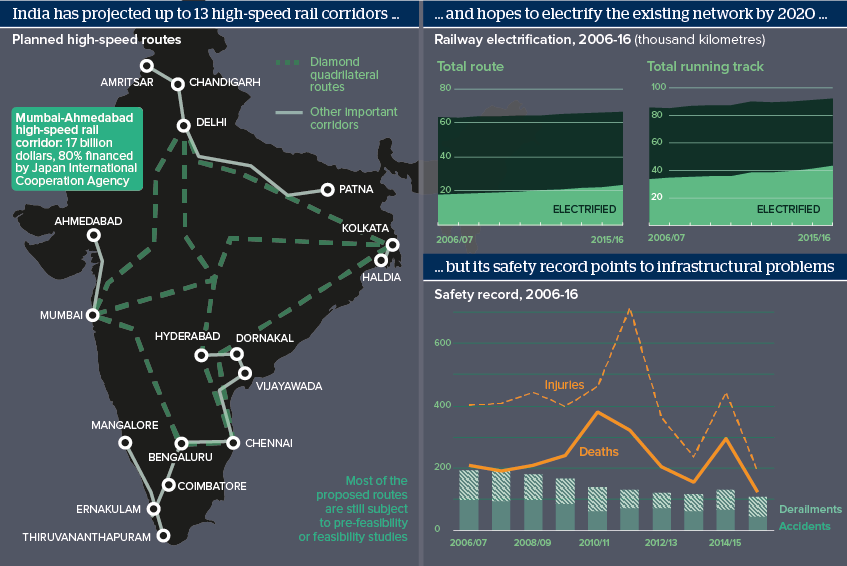India’s railway ambitions will progress only slowly
India has bold plans for electrification and high-speed lines, but modernisation requires massive investment
Source: National Rail Plan 2030, Indian Railways
Outlook
India has the world’s third-largest railway network, which is central to the country’s economy. In the 2015/16 fiscal year, India’s trains carried 8.1 billion passengers and 1.1 billion tonnes of freight. The state-owned Indian Railways is the world’s eighth-largest employer, with 1.3 million staff.
Prime Minister Narendra Modi in 2015 revealed plans to invest 137 billion dollars over five years in upgrading India’s railway network, and proposals for high-speed rail corridors and electrification are part of the drive to modernise.
Yet as the government considers how best to stimulate the slowing economy, concerns regarding India’s fiscal deficit may frustrate further investment.
Impacts
- Electrification will require a large increase in capital expenditure, and is unlikely to be completed by 2020.
- Uncertainty over the locomotive deal between Indian Railways and US firm General Electric may deter foreign investors.
- The Mumbai-Ahmedabad bullet train faces protests and is unlikely to be operational by the target date of 2022.
- Plans for other high-speed rail corridors will require private investment, though India will resist full privatisation.
- Following a World Bank report last month, India will face pressure to institute an independent rail safety investigator.
See also
- India’s fiscal deficit will widen - Nov 7, 2017
- China-EU 'Silk Road' railways bring new advantages - Jun 16, 2016
- More graphic analysis
